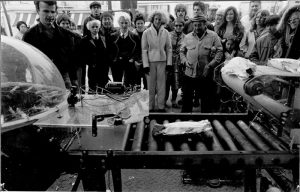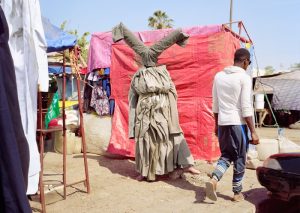Cristina Bilsland is particularly interested in researching “mundane” issues and responding to them through product design. She has been developping three projects in response to obesity, eating disorders and obsessions.
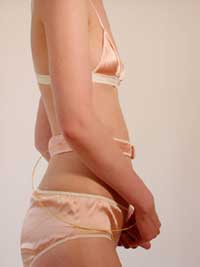
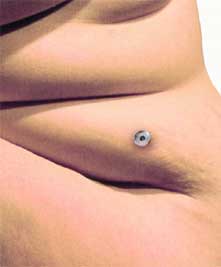 The Underbelt (picture on the left) is a piece of underwear. This self-operated constricting device provides a physical reminder of satiety whenever required. As soon as a button is pressed, the belt pulls itself inwards, giving the wearer a brief “tug” around the waist to give the body a physical reminder of satiety. It then releases to a comfortable fitted position. This piece challenges our awareness of guilt towards gluttony through physical constriction. Science has proven that tightness around the waist plays a major role in our behaviour towards food consumption. Ironically, clothing manufacturers continue to silently and gradually increase actual fitting dimensions whilst continuing to use existing size labels. This piece raises the question whether we are subliminally buying into this self-delusion. It also aims to question how far we are prepared to go in our indulgent quick-fix culture.
The Underbelt (picture on the left) is a piece of underwear. This self-operated constricting device provides a physical reminder of satiety whenever required. As soon as a button is pressed, the belt pulls itself inwards, giving the wearer a brief “tug” around the waist to give the body a physical reminder of satiety. It then releases to a comfortable fitted position. This piece challenges our awareness of guilt towards gluttony through physical constriction. Science has proven that tightness around the waist plays a major role in our behaviour towards food consumption. Ironically, clothing manufacturers continue to silently and gradually increase actual fitting dimensions whilst continuing to use existing size labels. This piece raises the question whether we are subliminally buying into this self-delusion. It also aims to question how far we are prepared to go in our indulgent quick-fix culture.
Body Plugs and Flabfuel (picture on the right) shifts the focus from losing fat to making use of it. By facilitating the liposuction procedure, excess fat becomes an accessible source of energy. Thousands of pounds of subcutaneous fat are thrown away every year in hospitals after liposuction, post-gastric bypass, body contouring and tummy tucks.
The fat donation programme aims to provide an efficient way to remove excess fat whenever desired, without the need for surgeries or diets. The fat collected by the suction clinics is refined and turned into a fuel – Flabfuel, which can be used to run vehicles as well as heat homes.
My favourite among her projects is GO-DO, an inflatable polyurethane doll inspired in the current debates on child obesity.
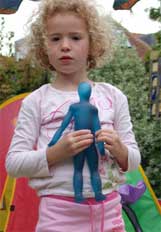
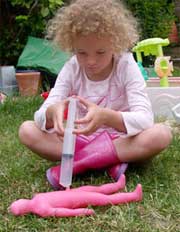
Dolls are widely used in therapy and as means of communication about events with children’s bodies, in the case of children who have been abused or handicapped or as sexual education tools and for teaching about ethnic differences, etc… The reason for that is that kids can instantaneously relate to dolls.
But even though they are larger than their counterparts in the 50s, children are still given 50s shaped Barbie dolls to play with. If given the opportunity to decide whether their doll was to be slim or fat, which would they choose? Would they want their doll to look like them? Should we give a child that choice?
The doll is manipulated through the injection of a liquid into its hollow body, which changes its shape from very slim to obese (and vice-versa).
Thanks for the pictures and explanations, Cristina.



